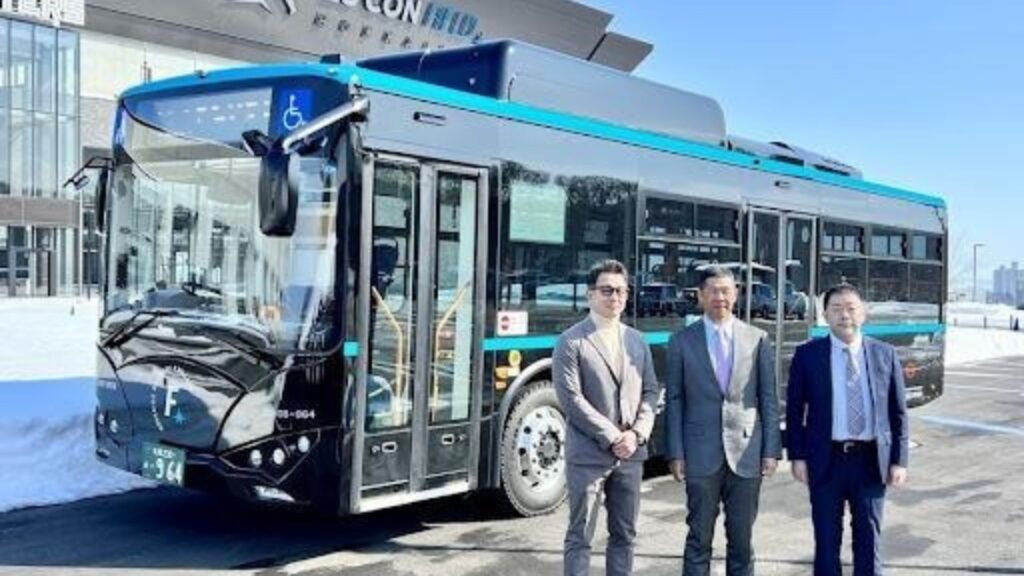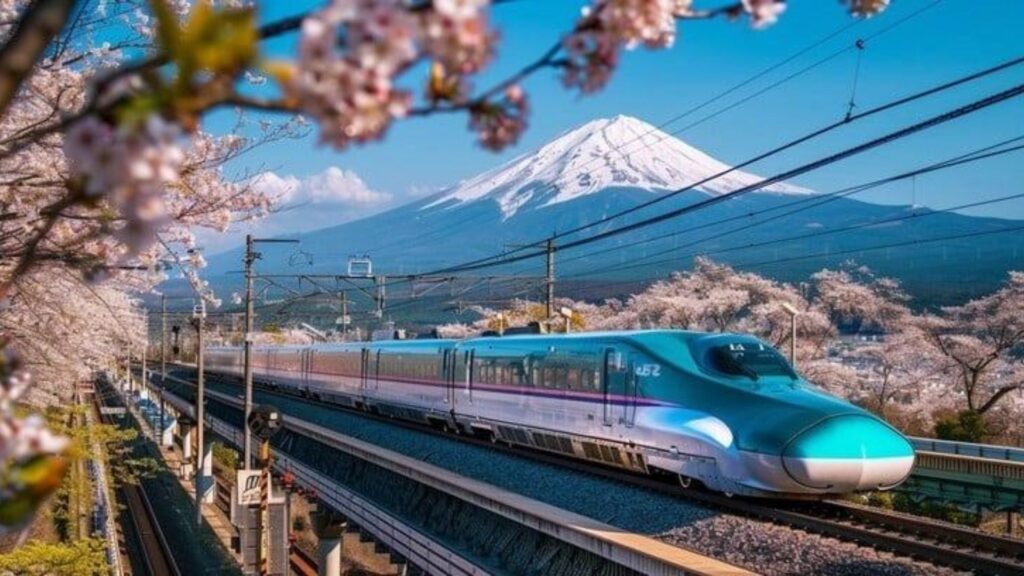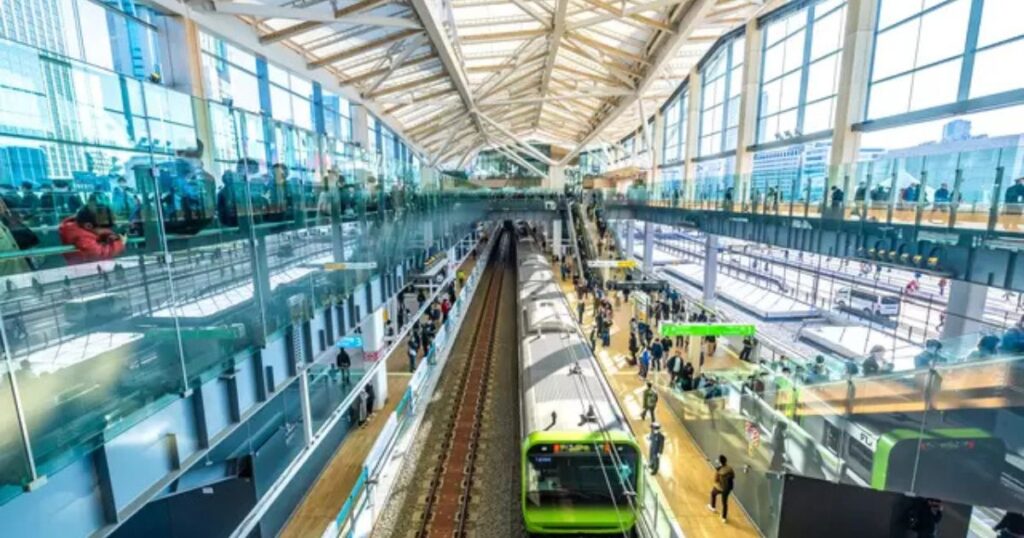Japan has one of the most efficient, reliable, and developed transportation systems worldwide. Whether you go through bustling cities or the tranquil countryside, Japan’s trains, subways, and buses will seamlessly take you anywhere you’d like to go. It’s more than just getting from one place to another; the transportation system reflects Japan’s precision, innovation, and hospitality culture.
This blog will offer an insightful review of Japan’s unique transport system, emphasizing trains, subways, and buses, as well as suggestions for getting the most from your travels.
1. The Backbone of Japan’s Transportation: Trains
Why Trains Are at the Heart of Japanese Travel
The most popular and effective means of the Japanese transportation system is by train. The train network reaches the major cities, regional towns, and remote country areas. Punctual, clean, and handy, Japanese trains are regarded as the epitome of the nation’s pursuit of excellence.

Types of Trains in Japan
Shinkansen (Bullet Trains):
Operated by the Japan Railways Group or JR Group, Shinkansen is famous for its comfort and speed. It can reach speeds of up to 320 km/h and connects major cities like Tokyo, Kyoto, and Osaka in record time.
Features include reclining seats, Wi-Fi, and spacious cabins.
Limited Express Trains:
It is ideal for longer regional trips without the premium cost of the Shinkansen.
Examples: N’EX (Narita Express) for airport transfers and Haruka Express for Kansai Airport.
Local Trains:
Operate on shorter routes, stopping at all stations.
Perfect for exploring rural areas and smaller towns.
Tourist Trains:
Designed for the pleasure of tourists, there are scenic routes like the Sagano Scenic Railway in Kyoto, and the Gono Line in northern Japan.
Dissertation on Trains
Punctuality: The trains are so exact that even delays are calculated in seconds.
Japan Rail Pass (JR Pass)
Cheap pass for travelers who will travel extensively by train on JR-operated trains. The Shinkansen is also included.
Comes in 7-day, 14-day, or 21-day versions.
Etiquette on Trains
- Noise: Do not shout out loud; make use of your phone only at a phone booth.
- Priority Seating: For elderly, pregnant women, and those with disabilities.
- Queuing: When waiting to board, wait in line order.
2. Exploring Japan’s Cities: The Subway
Why Are Japan’s Subways World-Class?
The subway systems of Japan have wide coverage, cleanliness, and easy navigation for getting around major cities like Tokyo, Osaka, and Nagoya.
Top Subway Systems in Japan
Tokyo Metro and Toei Subway:
Covers 13 lines with access to key districts such as Shinjuku, Ginza, and Akihabara.
Color-coded lines and clear signage make it easy for non-Japanese speakers to navigate.
Osaka Metro:
The Misumi Line is the most known, connecting Umeda, Namba, and Shin-Osaka stations.
Easy access to major attractions such as Dotonbori and Osaka Castle.
Kyoto Subway:
Has two main lines: Karasuma and Tozan, which complement buses in reaching temples and gardens.
How to Use the Subway?
IC Cards:
Prepaid cards like Suiza and Pasmo allow seamless travel on subways, buses, and even trains.
Simply tap the card on the entry and exit gates.
Ticket Machines:
Easy-to-use machines with an English language option for single-trip tickets.
Apps:
Download navigation apps like Hyper Día for train schedules and Google Maps for subway route planning.
Subway Travel Tips
Avoid rush hours (7:30 to 9:30 AM and 5:00 to 7:00 PM) for a less crowded experience.
Look for women-only cars during peak hours, especially in Tokyo.
3. Exploring Beyond Cities: The Bus System
The Role of Buses in Japan
While trains and subways dominate urban transportation, buses are essential for reaching rural areas, scenic spots, and attractions not covered by rail. Buses in Japan are reliable, clean, and equally punctual.
Types of Buses
City Buses:
They cover city areas, like the Kyoto City Bus which is ideal for reaching temples and shrines.
Road Buses:
These connect cities but at a lesser rate compared to Shinkansen.
Examples: Willer Express and JR Bus.
Tourist Buses
Operate on routes along the most visited attraction routes. Examples include the Hakone Tozan Bus along the route to Mt. Fuji and the Nikko World Heritage Bus.
Night Buses:
A long journey at night cuts accommodation costs, making travel very economical.

How to Use Buses in Japan?
Boarding System:
In most cities, board at the back and exit at the front.
Take a ticket when boarding and pay upon exit, based on the distance traveled.
Flat Fare System:
In major cities like Kyoto, buses charge a flat fare regardless of distance.
Tips for Bus Travel
- Check the destination board, as announcements may only be in Japanese 🇯🇵 on some routes.
- Use Google Maps or the Navi Time app to find bus routes and schedules.
- Exact change, or use an IC card for payment.
4. Trains, Subways, and Buses Integration
One of the standout features of Japan’s transportation system is the seamless integration of trains, subways, and buses. Using a single Japan IC card explained like Suiza or Pasmo, travelers can switch between modes of transport effortlessly. This interoperability makes Japan a dream destination for travelers, even first-timers.
5. Sustainable and Innovative Features
Japan’s transportation system is not only efficient but also eco-friendly and innovative:
Electric and Hybrid Buses:
Many cities are using environment-friendly buses to reduce emissions.
Smart Stations:
The train stations have AI-guided navigation and robot assistants.
Bicycle Rentals:
Most of the train stations provide bicycle rentals to encourage green tourism.
6. Comparing Transportation Modes
| Aspect | Trains | Subways | Buses |
|---|---|---|---|
| Coverage | Nationwide | Urban areas | Rural and scenic areas |
| Cost | Moderate to high | Low to moderate | Low to moderate |
| Speed | Fast | Moderate | Variable |
| Ease of Use | Easy with JR Pass | Easy with IC cards | Requires route knowledge |
7. Travel Tips for International Visitors
- If you intend to travel between cities often, then get a Japan Rail Pass.
- Get an IC card like Suiza or Pasmo for convenience in urban transport.
- Download apps like Hyper Día for train schedules and route planning.
- Use luggage forwarding services (Takayuki) to make traveling between cities a breeze.
8. Conclusion: Why Japan’s Transportation System is Unique?
Japan’s transportation system is more than a way to get from point A to point B; it is an experience. Whether you are speeding through the countryside on a Shinkansen, navigating Tokyo’s complex subway lines, or taking in the views on a bus ride to Mt. Fuji, the system embodies Japan’s commitment to efficiency, innovation, and hospitality.

End
Japan’s trains, subways, and buses are of world-class quality. Unparalleled efficiency, integration, and innovation make traveling in the country’s urban and rural areas seamless and exciting.
Are you ready to experience the magic of Japan’s transportation network? Start planning your adventure today!

Pingback: Affordable Japan Travel Guide: Tips for Flights, Food, and Fun